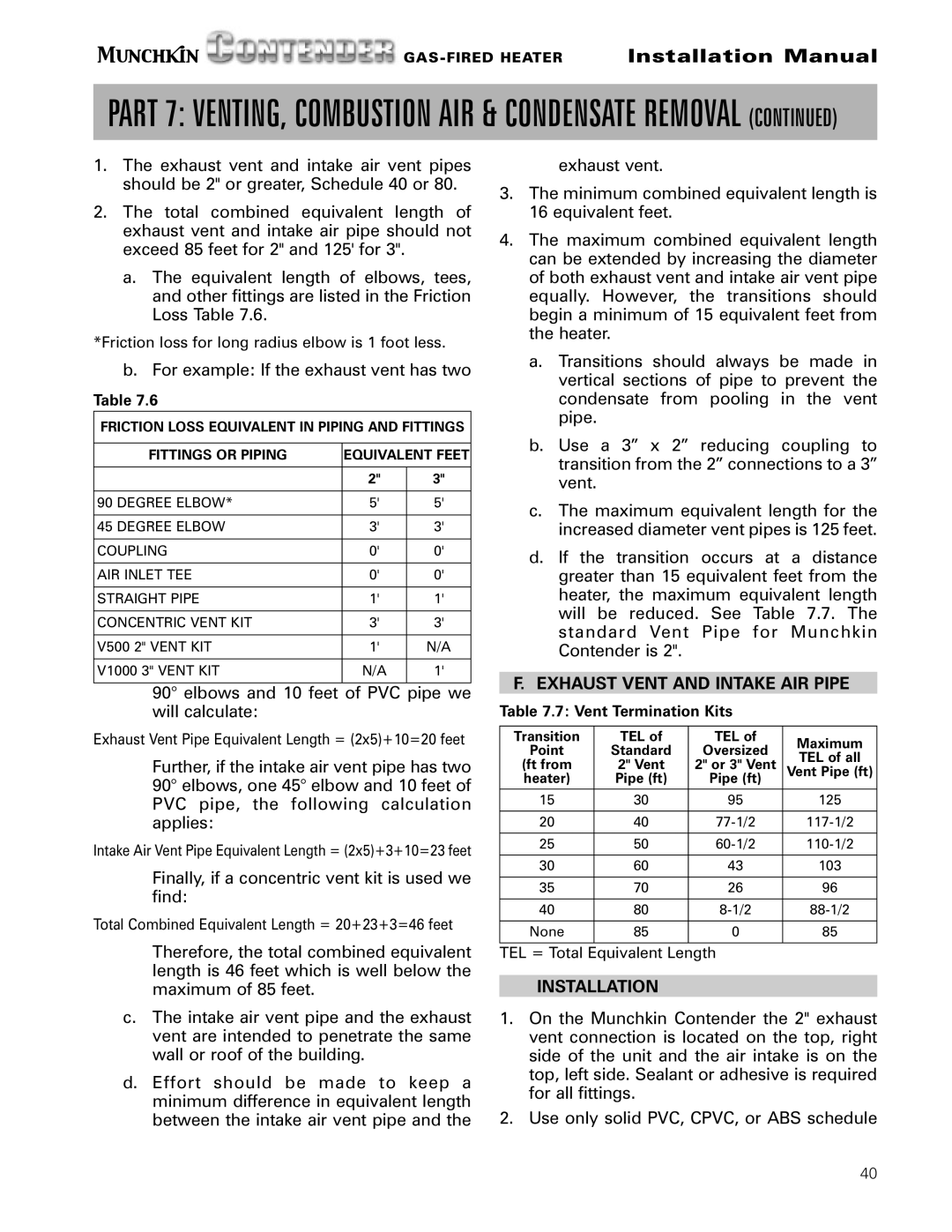Gas-Fired Hot Water Circulating Heater specifications
The Munchkin Gas-Fired Hot Water Circulating Heater is a cutting-edge heating solution designed to provide efficient and reliable hot water for residential and commercial applications. Renowned for its compact design and innovative technology, the Munchkin heater combines performance with energy efficiency, making it an ideal choice for those seeking comfort and cost savings.One of the main features of the Munchkin heater is its modulating burner. This technology intelligently adjusts the heating output based on the demand for hot water, ensuring that energy is not wasted. This leads to lower energy bills and a reduction in environmental impact, as the system only uses the necessary resources to maintain desired water temperatures.
Another notable characteristic is its high-efficiency rating. The Munchkin heater operates with an impressive annual fuel utilization efficiency (AFUE) of up to 95%. This means that the majority of the fuel consumed is converted into usable heat. By maximizing energy utilization, homeowners can enjoy a significant reduction in utility costs while minimizing emissions.
The compact size of the Munchkin Gas-Fired Hot Water Circulating Heater is another significant advantage. It is designed to fit into tight spaces, making it suitable for homes where space is at a premium. This compact design does not compromise performance; instead, it enhances installation flexibility, allowing for placement in basements, closets, or utility rooms.
Munchkin heaters are equipped with advanced control systems that offer enhanced convenience. The digital display and programmable settings allow users to set their preferred temperatures and schedules. This feature not only enhances user comfort but also optimizes energy usage, as water is heated only when necessary.
Safety is also a top priority with Munchkin products. The heater includes built-in safety features such as flame monitoring systems, automatic shut-off capabilities, and pressure relief valves, providing peace of mind for users.
In summary, the Munchkin Gas-Fired Hot Water Circulating Heater is a high-efficiency, compact, and innovative solution for hot water needs. With its modulating burner, high-efficiency rating, advanced control systems, and safety features, it stands out as a reliable choice for those looking to invest in heating technology that prioritizes energy conservation and performance. This heater is truly a forward-thinking solution for modern hot water requirements.

